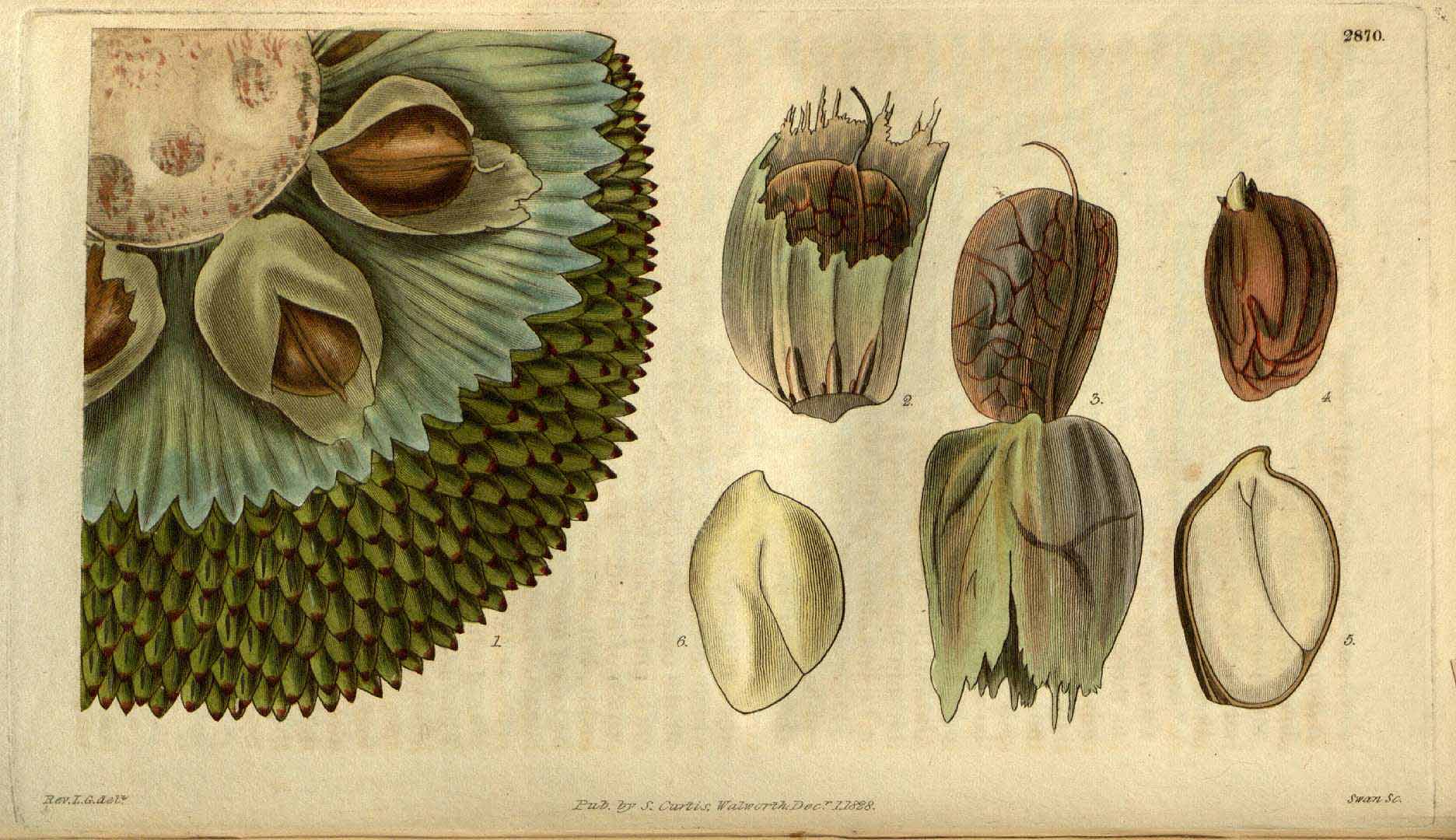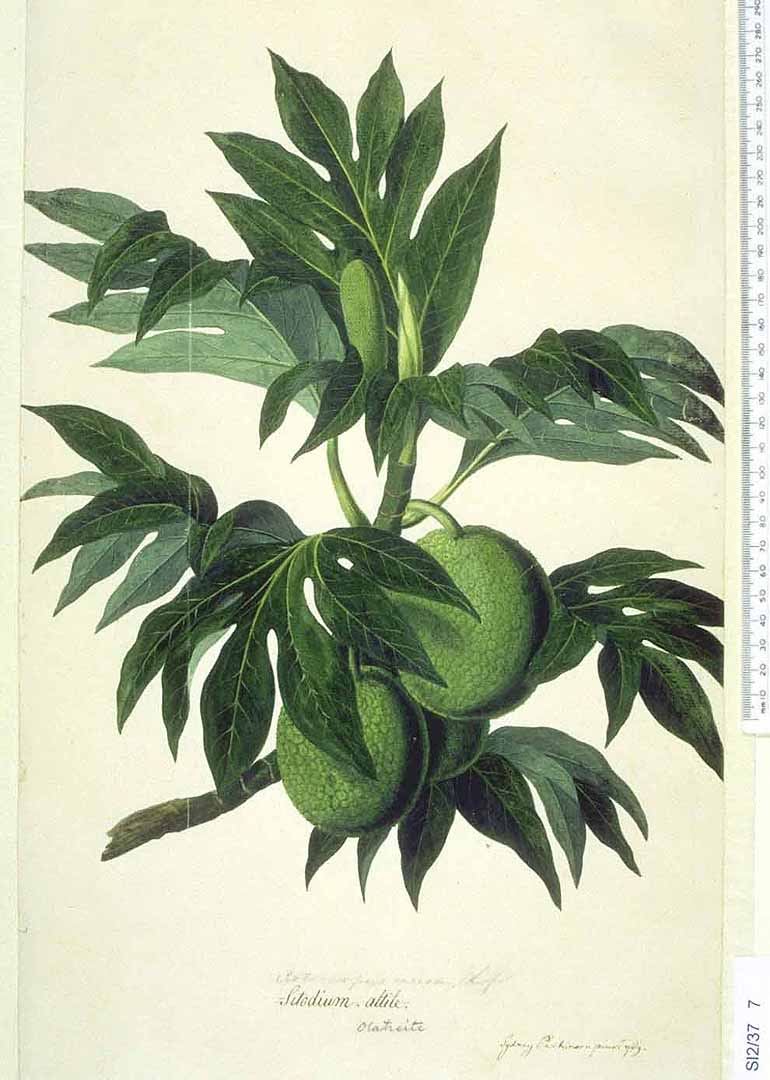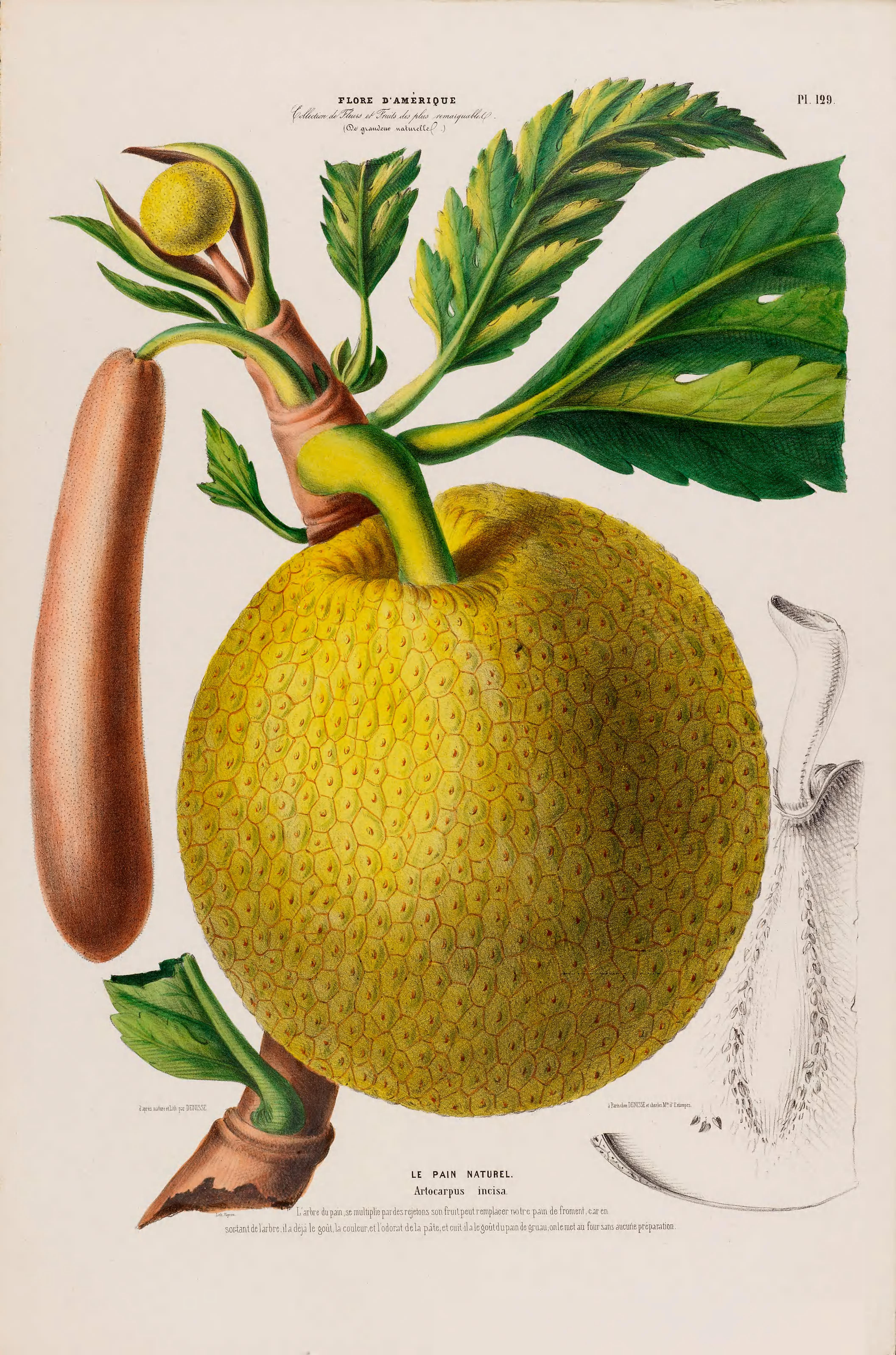! Nouveau site ici !
Vita > Plantae > Magnoliophyta > Magnoliopsida > Rosales >
Moraceae > Artocarpus
Artocarpus altilis
(Arbre à pain)



 | **** - ****
| **** - ****
Vita > Plantae > Magnoliophyta > Magnoliopsida > Rosales >
Moraceae > Artocarpus
Artocarpus altilis
(Arbre à pain)

Un grand arbre atteignant 20-26 m de hauteur. Le tronc peut mesurer 6 m de haut avant de se ramifier. Le coffre peut mesurer jusqu'à 1 m de diamètre. C'est un arbre à feuilles persistantes mais qui peut perd... (traduction automatique)
→suite
⬀
Le  donne accès au menu
donne accès au menu (c'est votre point de repère) 😊 ;
En dessous vous avez la classification, à partir de la vie (Vita, premier rang) jusqu'à la classe au dessus de la plante, dont vous trouvez ensuite le nom scientifique/botanique (latin) puis le nom commun (français), le cas échéant ;
C'est aussi un lien vers la fiche complète (tout comme la ✖, en bas à droite, et le +, en dessous de la description) ;
Vient alors l'illustration (ou ce qui la remplace, en attendant), la comestibilité :
Et en bas
⬂







